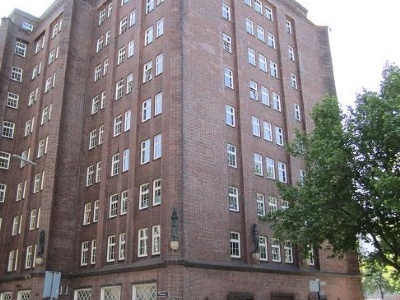Tesch & Stabenow
Few has probably heard about the Company Tesch & Stabenow, but say Zyklon B it will probably be different. Tesch & Stabenow was one of two companies that sold Zyklon B to SS who in turn used it to murder people in gas chambers. The history of Zyklon B dates back to March 1919 when several chemical companies in Germany founded DEGESCH (Deutsche Gesellschaft for the German pest control company). One of the companies was called Degussa (Deutsche Gold- und Silber-Scheideanstalt), which since 1916 was the leading company in German market for production of pesticides against vermin. in 1920, DEGESCH produced a secure and odourless vermin-control gas called Zyklon A. In 1922, another researcher at DEGESCH, Walter Heerdt, sought help from the team get a patent for a poison gas called Zyklon B (chemical name HCN). The patent was approved in 1926 and Zyklon B was produced and sold as a pesticide both in and outside Germany.
Several of the companies that co-founded DEGESCH sold their shares in the early twenties to Degussa. Degussa became by far the largest shareholder in DEGESCH with its 85 percent. However, to raise additional capital for the company, Degussa sold half of its shares to IG Farben. Degussa’s main task was to secure patents. The production of Zyklon B was carried out by Dessauer Werke, another number of subcontractors (including IG Farben) supplied the components necessary for the production of Zyklon B. DEGESCH sold the produced gas to Degussa, which in turn sold the sales rights to two companies, Heerdt and Linger GmbH (Heli) and Tesch & Stabenow (Testa), to reduce expenditure. Heli and Testa then divided the market by giving Heli the sales rights west of the River Elbe while Testa got the east side. Heli delivered Zyklon B to Mauthausen while Testa delivered to Neuengamme, Ravensbruck, Sachsenhausen, Stutthof, Majdanek and Auschwitz.
Zyklon B was used by the German army (Wehrmacht) and SS to disinfect barracks. But Zyklon B will always be known for being the gas the SS used to systematically murder people, mainly Jews. Zyklon B was inserted into the gas chamber through small openings in the wall or ceiling. Zyklon B was used on humans for the first time in the Nazi Euthanasia program, although carbon monoxide was the most common gas in the Euthanasia program. The first time Zyklon B was used in concentration camps was in the early 1940s when the SS tested the gas on about 250 gypsy children in Buchenwald. In Auschwitz, Zyklon B was tested for the first time in September 1941 when about 800 prisoners in the basement of block 11 were killed. Zyklon B is a blistering crystal which, when in contact with air, forms a toxic hydrogen cyanide gas that attacks the cytochrome of cells in the respiratory system, where 90 percent of the oxygen is processed. Zyklon B is corrosive and causes enormous pain in the throat, nose, stomach, mouth and mucous membranes. Zyklon B is most effective at a temperature of 25 degrees and above. The body heat from the people in the gas chamber guaranteed temperatures of at least 25 degrees.
Between 1942 and 1944, production of Zyklon B more than doubled compared to the years 1940 and 1941. But in the end, it was no more than about 5 percent of the total quantity of Zyklon B delivered to Auschwitz that was used to murder people. When the SS ordered Zyklon B, they requested that the special smell of bitter almond be removed and made odorless. In accordance with German law, Zyklon B contained a strong odor of bitter almonds as a form of warning. But this warning, for obvious reasons, the SS wanted to withhold the people they were about to be murdered. Zyklon B was delivered in the form of pellets in containers of varying sizes. Because the gas was odorless the safety surrounding the gas was more rigorous than in normal cases.
Current status: Preserved with memorial tablet (2012).
Address: Messberg 1, 20095 Hamburg.
Get there: Metro to Messberg Station.
Follow up in books: Langbein, Hermann m.fl: Nazi mass murder – A documentary of the use of poison gas (1993).


There are still companies trying to use the term Zyklon in their marketing, but the reactions, especially from Jewish groups, comes quickly and harsh. Companies therefore will have to find other names. Tesch & Stabenow Director Bruno Tesch was sentenced to death after the war for his involvement in the distribution of Zyklon B to concentration camps.